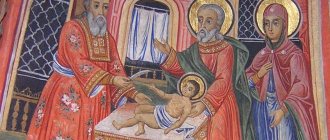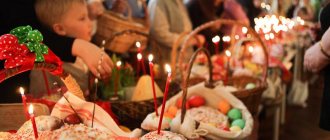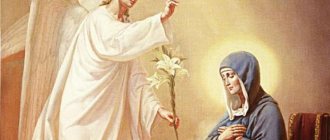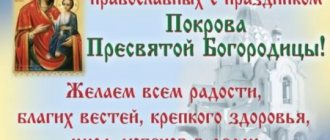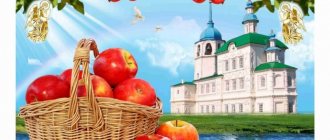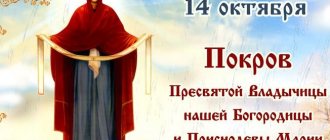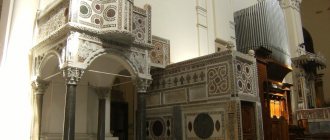The most solemn and joyful day marked in the Calendar of the Russian Orthodox Church is Easter. In addition, the annual cycle includes many different holidays, divided into groups according to their significance and characteristics. These are days celebrated by all Orthodox Russians. However, there are also holidays on the occasion of which celebrations are held only in individual churches. They are called throne ones. These are the ones that will be discussed in this article.
Patronal holiday - what does it mean?
In every Orthodox church there is a throne (literally a special table) located inside the altar and consecrated in honor of some saint or important event in sacred history. On the days of their commemoration, temple, or, in other words, patronal holidays are held. In the Church, this custom was established soon after the baptism of Rus', and has been strictly observed for many centuries. According to tradition, both members of the given parish and guests who come to share the common joy take part in the celebrations.
Since many churches have two or three chapels (and sometimes more), then, accordingly, they have several altars with thrones. In these cases, patronal feasts are held in them more than once a year, according to the number of available thrones, consecrated in honor of various historical events and saints. It is typical that in large settlements where there are several churches, not all residents participate in the celebrations at the same time, but only members of one or several “birthday parishes.”
Saints' Day
Hieromartyr Tertius (Terentius), Bishop of Iconium (I)
Apostle Tertius was one of the 70 disciples of the Savior and the closest assistant of the Apostle Paul, who wrote his letter to the Corinthians. He was the second bishop of Iconium. He died as a martyr for his faith in Christ, pierced by a sharpened tree.
Martyr Julian of Tarsus (about 305)
Listen to the short life of the saint, to whom the temple in Tsarskoye Selo is dedicated, on radio “Vera”.
Venerables Julius and Julian (V)
Listen to the brief life of the holy brothers, priest Julia and deacon Julian, known for the gift of prophecy, on radio “Vera”.
Martyr Archil II, King of Iveron (VIII), Georgian
Listen to the short life of the king, who did not convert to Islam and suffered to death for this, on radio “Vera”.
Martyr Luarsab II, King of Kartalin (1622), Georgian
Listen to the story of the heroic deed of the king who did not betray his faith in Christ on radio “Vera”.
Council of all venerable and God-bearing fathers who shone forth in Holy Mount Athos
On the second Sunday after Pentecost, the memory of the saints who labored on holy Mount Athos is celebrated. The most interesting articles by our authors dedicated to Athos are collected for you in our materials.
Listen to a brief description of the holiday on Radio Vera.
Prayer services in parishioners' homes
In Rus', it has long been the custom that, along with Easter and other solemn days of the church calendar, the main events of the year were patronal holidays. What this meant for the Orthodox people can be learned from the descriptions of the celebrations left by eyewitnesses and participants. In rural areas, after the end of the liturgy, it was customary to go around all the villages included in a given parish in a procession of the cross. This was done in an unusually solemn manner, with icons and banners carried by especially respected people called “God-bearers.”
In some cases, especially if the parish was small, the rector of the church, together with his small clergy, visited the houses of parishioners a few days before the start of the celebrations and served prayer services in front of the family icons of the temple saints. At the same time, the priest sprinkled holy water on his parishioner’s home, his outbuildings, well, livestock and the entire plot of land belonging to him.
Since it was believed that after such a sprinkling, God’s blessing would certainly descend on the house and everyone who lived in it, on the eve of the temple holiday there were many who wanted to get the priest and those who accompanied him to come to them. It was customary to place a table covered with a white tablecloth at the gate in advance, on which they placed a ladle with water prepared for blessing. Such visits, accompanied by prayers, were a joy not only for the owners of the houses, but also for the priests themselves, since they were presented with money and food for their efforts. When the priest, having completed all the required rituals, left the courtyard, the family began the festive meal.
New Martyrs and Confessors of Russia
Hieromartyr John Budrin (1866 - 1918)
For 29 years he served as a priest, mainly at the Church of the Intercession in the village of Verkhniy Yar, Shadrinsky district, Perm province. The father of seven children, after the death of his wife in 1902, he did not look for a better place and remained with his flock in a poor parish.
Despite the brutal persecution of the Church by the godless authorities, Father John denounced the Bolsheviks for their lawlessness.
Read more
Church newspapers of that time reported about the martyrdom of the priest: “... the priest Fr. John Budrin, a courageous and fearless shepherd, boldly denounced the Bolsheviks. Before they killed him, they brutally tortured him: they pulled out the hair from his beard and head.”
Local residents who went in search of their shepherd found him beaten to death and buried him near the fence of the Church of the Intercession in the village of Verkhne-Yarskoye. The temple was closed in 1935.
In subsequent years, the atheists committed another blasphemy by installing a toilet directly above the martyr’s grave.
Currently, the proposed location of the martyr’s grave is near the altar of the inactive Intercession Church in the village. Verkhniy Yar was cleared and a wooden cross was erected.
Collapse
Reverend Georgy (Lavrov) confessor Archimandrite Meshchevsky and Danilovsky (February 28, 1862 - July 4, 1932)
Listen to the short life of the New Martyr George, who went through death row and a long imprisonment on Radio Vera.
The relics of the saint are in the Intercession Church of the St. Daniel Monastery in Moscow.
Hieromartyr Alexy Skvortsov (February 9, 1875 - July 4, 1938)
In the Church of the Beheading of John the Baptist in the Ivanovo Convent in Moscow, Father Alksy served first as a psalm-reader, and from 1898 as a deacon. In 1917, Deacon Alexy Skvortsov, at the age of 42, was ordained to the rank of priest . After the monastery was closed in 1918, when the cells became cells for political prisoners, he served until the closure of the last church.
Read more
Probably during these years in the family of Fr. Alexy lived with his 90-year-old father, Priest Pyotr Skvortsov. In the hungry, turbulent year of 1919, Father Peter died within the walls of the monastery, and wartime circumstances did not allow the body of the deceased to be taken out for burial in the city cemetery. Apparently, the elder was buried on the territory of the monastery in a narrow passage between the Hospital building and the monastery wall, as evidenced by the surviving half-erased inscription on the wall of the hospital building: “PETER GERMOGENOVICH SKVORTSOV 1829-1919.”
In the early 1920s, Priest Alexy Skvortsov and his family lived in a church house that previously belonged to the Church of the Life-Giving Trinity in Khokhly (14, apartment No. 11 on Khokhlovsky Lane).
It is known that in the 1930s, the eldest son Nikolai Alekseevich (born 09/07/1898) was under investigation. In 1932, his second son Sergei Alekseevich Skvortsov, 32 years old, was the head of the Railway Department in Velikiye Luki, Pskov region; the eldest daughter Elizaveta Alekseevna worked for 27 years in the city of Murom, Vladimir Region, as an assistant accountant of a savings bank; son Ivan Alekseevich, 24 years old, was sentenced by the OGPU to 5 years, daughter Maria Alekseevna, 22 years old, was unemployed; the youngest Vladimir was 8 years old by this time.
From the end of 1926, Father Alexy served in the Assumption Church in the village of Gzhel , and from 1929 in the Church of the Archangel Michael Zagornovo located near Gzhel .
In the early 1930s, the Ramenskoye branch of the OGPU began to look for a pretext to arrest the priest. In 1928, a collective farm was organized in the village of Zagornovo, the chairman of which was a peasant who knew his fellow villagers and local conditions well, and the collective farm quite successfully began to engage in economic activities, but in 1931 the district party committee sent another chairman from the city, after which destruction and looting began economy: the new chairman looked at the collective farm as a serfdom temporarily given to him. The peasants therefore began to show dissatisfaction and leave the collective farm. The chairman, in order to justify his failure, spread a rumor that the kulaks were allegedly planning to kill him and other Soviet leaders.
On December 12, 1932, Father Alexy was arrested and imprisoned in Butyrka prison in Moscow. On December 23, he was interrogated and, answering the investigator’s questions, said: “I was... careful not to talk... because I was afraid that I would be accused of something anti-Soviet... I spoke sermons very rarely. Sometimes I will say: “Orthodox, repent, cleanse your sins.” I remember once they sent us a large tax on the church; We didn’t have a penny of money in the church box, which is why I had to turn to the believers: “Orthodox, they sent us a big tax, we have nothing to pay, if God’s temple is dear to you, then help whoever you can . I do not plead guilty to the charges brought against me of preparing a terrorist act against communists in the countryside and conducting anti-Soviet agitation.”
Despite the complete lack of evidence of guilt, on January 10, 1933, the priest was charged with “for a number of years leading a counter-revolutionary group in the countryside that was preparing terrorist acts against local communists.”
On February 26, 1933, the OGPU troika sentenced Father Alexy to 5 years of exile in Kazakhstan. After the end of his term, the priest returned to serve in the Church of the Archangel Michael in the village of Zagornovo, where his family remained to live.
But this time his ministry turned out to be very short-lived. On March 25, 1938, he was arrested. At this time, arrests of NKVD employees began, including the arrest of the investigator in charge of the case of Father Alexy, and until May 1938, he was seemingly forgotten. The interrogations began after other investigators were appointed, and then staff witnesses began to be called again.
On May 14, the investigator interrogated Father Alexy.
– Tell me, do you plead guilty to carrying out counter-revolutionary activities and spreading vile slander about the party and government among the local population?
“I do not plead guilty to the charges brought against me and explain that I did not carry out counter-revolutionary activities among the local population at all, I never even spoke or conversed with anyone, being at home all the time.”
The same witnesses were called for confrontation; but Father Alexy stated that he was seeing some of the witnesses for the first time, and had never talked to others.
On June 7, 1938, the NKVD troika sentenced the priest to death. Priest Alexy Skvortsov was shot on July 4, 1938 and buried in an unknown mass grave at the Butovo training ground near Moscow.
Collapse
Walk like that!
An obligatory element of Orthodox patronal holidays was the reception and refreshment of guests, among whom could be not only relatives, but also neighbors, and sometimes complete strangers who happened to be at the gate. The celebrations were organized on a grand scale, which is generally typical for Russian people. No wonder they say: “Walk like that!”
It is known that until the end of the 19th century in Russia it was customary to celebrate each of the winter patronal holidays for a whole week. What this means is not difficult to guess. The celebrations, which began in the temple under the strict singing of the church choir, soon moved to homes, where, over a meal accompanied by copious libations, they acquired more than free features. The next day everything was repeated again, and this continued until the end of the week.
Discovery of the relics of St. Maxim the Greek (1996)
The son of a wealthy dignitary, one of the most educated people of his time, he became a monk on Mount Athos and came to Russia in the 16th century by invitation. He was not afraid to expose Prince Vasily for the divorce, for which he was imprisoned and then exiled. The chapel over his grave was destroyed during Soviet times.
The life story of Maxim the Greek is very similar to the famous story about the Count of Monte Cristo. Read our material for a fascinating investigation.
Difference between winter and summer festivals
Only with the advent of the 20th century the number of holidays was reduced to two or three. The only exception was the Nizhny Novgorod district, where, right up to the revolution, the custom was maintained of starting celebrations on the day on which the holiday fell according to the calendar, and continuing until the end of the week, no matter how many days it took.
But such fun, even in former times, was allowed only in winter, when the peasants took a break from field work. During the time of need, everything was different. Celebrations on the occasion of patronal feasts, as a rule, were limited to one day, and in those cases when circumstances forced the peasants to hurry, they took place in a shortened version - from lunch to evening or from sunset to morning. There is nothing to be done - the Lord sent down our daily bread, but we had to grow it ourselves.
How the Day of Methodius the Sparrowhawk was celebrated in Rus', folk signs
During Peter's Lent, healers and healers were actively involved in collecting comoco grass. But on July 3, they distributed it to hunters who were tracking quail. Such grass was collected only at sunset and stored in cow bladders.
People performed entire rituals to “charge” a gun for success; for this they used a special herb with which they fumigated it. It was believed that such a ritual would allow the gun to be fired without misses. The whole catch was that it was not so easy to get a lump of grass, because the healers gave it only to those who liked them.
In Rus' they believed that the echo was the voice of evil spirits. If people heard its echoes in the forest, then it was a goblin, if near a reservoir, then it was a water goblin, and near houses it was a brownie.
On the day of Methodius the Sparrowhawk, our ancestors especially closely monitored the behavior of spiders, because they could easily predict the weather:
- If the spiders were actively engaged in their work, then the weather is expected to be sunny;
- If the spider built webs for other insects, then you should expect rain or strong winds;
- If the spiders were hiding or removing their webs themselves, then bad weather should be expected;
- If the spider tried hard when weaving the nets, the weather will be sunny and warm.
Features of city celebrations
In cities, patronal feasts were celebrated with the same solemnity. Processions of the cross first went around the building of their own church, then the territory of the parish and, finally, went to their neighbors, if they also had a throne on that day, consecrated in honor of a given saint or event. Processions from neighboring parishes often moved towards the “birthday boy”, bringing congratulations on the patronal feast day.
Preparations were made for these celebrations several days before their onset. They had to sweep the yards and streets. They put things in order in the churches, cleaned the icon frames, and, if possible, tried to renew the carvings and gilding on church utensils. In churches in Moscow and other large cities, it was customary to illuminate bell towers and front facades with bowls with torches mounted on them.
Multi-day fun
All the above-mentioned affairs were handled by men, while women also had a lot of worries on the eve of the patronal feast. Duties included cleaning the house, baking bread and pies, and preparing all kinds of treats. Beer was usually brewed in every house, and wine and vodka were purchased, and in very fair quantities, since custom these days required “bringing a glass” to everyone who came into the hut, be it a passer-by, a fellow countryman, or just a beggar. Everyone had to be fed and watered.
This detail is also curious: if the patronal feast of the temple was celebrated by residents of several villages at once, then the tables, pooled together, were set in turn in each of them, which is why the celebrations could drag on for two weeks. This is known from chronicles compiled in the second half of the 19th century by residents of the Novgorod, Kostroma and Vologda provinces. The same picture was observed in Siberia. Having started a general celebration in one of the villages, the parishioners, after two to three days of feasting, moved to another, and then to a third, etc.
Reading the Gospel:
Gospel of Matthew, chapter 4, verses 18 - 23
Read excerpt
18 And as He passed near the Sea of Galilee, He saw two brothers, Simon called Peter, and Andrew his brother, casting nets into the sea, for they were fishermen, 19 and He said to them, Follow Me, and I will make you fishers of men. 20 And they immediately left their nets and followed Him. 21 From there, going further, He saw the other two brothers, James Zebedee and John his brother, in the boat with Zebedee their father, mending their nets, and he called them. 22 And they immediately left the boat and their father and followed Him. 23 And Jesus went throughout all Galilee, teaching in their synagogues and preaching the gospel of the kingdom, and healing all manner of sickness and all manner of disease among the people.
Collapse
Priest Dmitry (Baritsky) comments
Gospel of Matthew, chapter 4, verse 25 - chapter 5, verse 12
Read excerpt
25 And a great multitude followed him from Galilee, and from the Decapolis, and from Jerusalem, and from Judea, and from beyond the Jordan.
1 When He saw the people, He went up to the mountain; and when he sat down, his disciples came to him. 2 And He opened His mouth and taught them, saying: 3 Blessed are the poor in spirit, for theirs is the kingdom of heaven. 4 Blessed are those who mourn, for they will be comforted. 5 Blessed are the meek, for they will inherit the earth. 6 Blessed are those who hunger and thirst for righteousness, for they will be satisfied. 7 Blessed are the merciful, for they will receive mercy. 8 Blessed are the pure in heart, for they will see God. 9 Blessed are the peacemakers, for they will be called sons of God. 10 Blessed are those who are persecuted for righteousness' sake, for theirs is the kingdom of heaven. 11 Blessed are you when they revile you and persecute you and say all kinds of unjust things against you because of Me. 12 Rejoice and be glad, for great is your reward in heaven: even so they persecuted the prophets who were before you.
Collapse
Priest Stefan (Domuschi) comments
Holiday trade
In many regions of Russia there was a tradition of organizing fairs and bazaars to coincide with patronal holidays. They were usually visited after the church service and the subsequent meal. This was especially common in the Volga province and Siberia. Descriptions of such holiday fairs can be found in the works of A. M. Gorky, N. S. Leskov, D. N. Mamin-Sibiryak and many other classics of Russian literature.
Since Rus' began to solemnly celebrate calendar days of commemoration of saints, as well as the most important events of sacred and church history, a certain culture of holding festive festivities has developed. From year to year it was customary to arrange them in the same places, which were usually church squares with adjacent streets, outskirts, country groves, meadows, high river banks, etc.
A large crowd of festively inclined people always opened up a wide field of activity for various kinds of small traders, whose goods were in constant demand. Cheap gingerbread cookies, sweets, seeds, nuts and all kinds of kvass were in great demand. The festivities, in which mainly unmarried youth took part, often dragged on until the morning and gave rise to the very same complaints from the clergy mentioned above.
Icon of the Mother of God
Kazanskaya Korobeinikovskaya
The greatest Altai shrine has been located in the Church of the Mother of God of Kazan in the village of Korobeynikova since the beginning of the 20th century. The temple was erected in 1902. In the church, decorated with paintings, there were many holy icons, among which the large Kazan image of the Mother of God stood out with its amazing beauty.
Read more
Schema nun Georgia (a local resident) recalls: “During the dry season, all the residents went out with a religious procession around the village. The main icon was carried by several people. After that it was sure to rain. During the years of Soviet power, atheists assured the people that the priest arranged everything, knowing in advance about the rain. But this, of course, is not true. Father was a simple man like us; at that time he could not have a weather report in advance.”
In 1938, the temple was closed, looted and turned into a granary. The Mother of God appeared to pious Olga in a dream, commanding her to take the icon from the desecrated temple. The image was badly damaged, only the eyes of the Mother of God and the Divine Infant were distinguishable, but believers constantly gathered around the icon, sang akathists, and read prayers. And gradually the image began to become clearer, and in 1972 a miracle happened - the icon was renewed . Already in 1982, the restoration of the temple began in the village of Korobeynikovo.
On July 2, 1994, the icon of the Kazan Mother of God was taken by procession from Barnaul to Korobeynikovo and installed in the renovated church in its rightful place. It became a revered shrine of the Mother of God of Kazan Monastery, opened in the village.
Collapse
Revival of tradition
Nowadays, when after long decades of atheistic persecution the Church has regained its former positions, patronal feasts have not lost their significance, but the form of their implementation has undergone some changes. The entire cycle of festive services established by the church canon remained the same. They are also accompanied by religious processions, although not so long.
Nowadays, their route usually runs around the temple and rarely goes beyond the church fence. Mutual congratulations remain the same, but mass celebrations and associated feasts are a thing of the past. Usually the matter is limited to a modest and decent meal in all respects, arranged by the rector for the clergy and the most active members of the parish. A new trend has been the holding of various events on patronal feast days, including the demonstration of Orthodox-themed films, performances by folk groups and amateur performances. This is especially widely practiced in Moscow churches.
Apostolic reading:
The Epistle of the Apostle Paul to the Romans, chapter 2, verses 10 - 16
Read excerpt
10 On the contrary, glory and honor and peace to everyone who does good, first to the Jew, then to the Greek! 11 For there is no partiality with God. 12 Those who sin without the law are without the law and will perish; and those who have sinned under the law will be condemned by the law - 13 because it is not the hearers of the law who are righteous before God, but the doers of the law will be justified, 14 for when the pagans, who do not have the law, by nature do what is lawful, then, not having the law, they they are a law to themselves: 15 they show that the work of the law is written in their hearts, as evidenced by their conscience and their thoughts, now accusing, now justifying one another - 16 on the day when, according to my gospel, God will judge the secret things people through Jesus Christ.
Collapse
Bishop Feoktist (Igumnov) comments
Patronal holidays among Western Christians
In conclusion, we note that similar holidays exist among Christians in Western Europe. The most typical example is the German “Kirmos”, also held on the days of commemoration of one of the saints. In terms of its form, it is very close to its Russian counterpart. The service also includes a religious procession, the route of which runs through the surrounding villages. This is followed by lunch and dancing. Typically, such holidays last from 2 to 4 days, accompanied by all sorts of funny competitions - running in sacks, dancing with flags, hand-to-hand fights between guys, etc. Their final stage is, as a rule, a masquerade.
A similar example can be seen in the Czech Republic, where patronal feasts are called “Posviceni”, which translated means “consecration”. They are not held all year round, like ours, but from the end of summer until the pre-Christmas period, called Advent. In general, the course of the celebrations is close to ours, but its distinctive feature is the custom of visiting cemeteries and performing a special service for the dead there.
Sunday, July 4, 2021, all saints who shone in the Russian land
Sunday is a day off, which every Christian devotes to God and His works, first of all, to visiting church. On Sunday morning we put everything else aside to participate in the liturgy.
In the “Getting Ready for Sunday” project, we are trying to help you consciously come to Church, study the traditions and features of worship in advance, get acquainted with a passage from the New Testament and its interpretations, as well as with the short lives of the saints commemorated by the Church on Sunday - July 4th.
In addition to all the Russian saints, today, as every year on July 4, we remember the martyrs for Christ - Tertius and Julian, Nikita, the Georgian kings who suffered for the faith - Archil II and Lausarb II, the Monks Julia and Julian, the Hieromartyr John, the confessor George, as well as the cathedral Athos saints.
On July 4, 1938, the holy martyrs Alexy, Pavel, Nikolai and the holy martyr Jonah were shot at the Butovo training ground.
In 2021, Sunday July 4th is highlighted in the church calendar thanks to the discovery of the relics of St. Maximus the Greek 25 years ago - in 1996. Today the relics of the saint are in the Spiritual Church of the Trinity-Sergius Lavra.
Watch one-minute biographies of Russian saints:
Saint Luke Voino-Yasenetsky - holy doctor
Nestor the Chronicler - holy writer
Reverend Andrei Rublev - the most famous Russian icon painter
Patriarch Job - first patriarch
Their feat began after the sudden death of her husband: Reverend Martyr Princess Elizabeth, Blessed Xenia of Petersburg
Read more about Russian saints in our materials .
Troparion to all saints who have shone in the Russian land
Like the red fruit of Your saving sowing,/ the Russian land brings to You, O Lord, all the saints who shone forth in that one./ With those prayers in the deep world// Preserve the Church and our country by the Mother of God, Most merciful.
Translation: Like the beautiful fruit of Your saving sowing, the Russian land brings You, Lord, all the saints who have shone in it. Through their prayers and the intercession of the Mother of God, preserve the Church and our country in deep peace, O Most Merciful One.
Prayer to all saints who have shone in the Russian land
About the all-blessedness and divine wisdom of the saints of God, who sanctified the Russian land with their deeds and left their bodies, like the seed of faith, in it, with their souls standing before the Throne of God and constantly praying for it! Behold, now, on the day of your common triumph, we, sinners, your lesser brethren, dare to bring you this song of praise. We magnify your great deeds, spiritual warriors of Christ, who with patience and courage to the end overthrew the enemy and delivered us from his deception and intrigues. We bless your holy life, luminaries of the Divine, shining with the light of faith and virtues and enlightening our minds and hearts with wisdom. We glorify your great miracles, the blossoms of the region, in our northern country, beautifully flourishing and the aromas of gifts and miracles fragrant everywhere. We praise your God-imitating love, our intercessor and protector, and, trusting in your help, we fall to you and cry out: all our holy relatives, who have shone forth from the ancient years and have labored in the last days, manifested and unappeared, known and unknown! Remember our weakness and humiliation and with your prayers ask Christ our God, so that we, having sailed comfortably through the abyss of life and preserved the treasure of faith unharmed, will reach the haven of eternal salvation and in the blessed abodes of the Mountainous Fatherland, together with you and with all the saints who have pleased Him from the ages let us be established by the grace and love of mankind of our Savior, the Lord Jesus Christ, to whom, together with the Eternal Father and the Most Holy Spirit, befits unceasing praise and worship from all creatures forever and ever. Amen.


